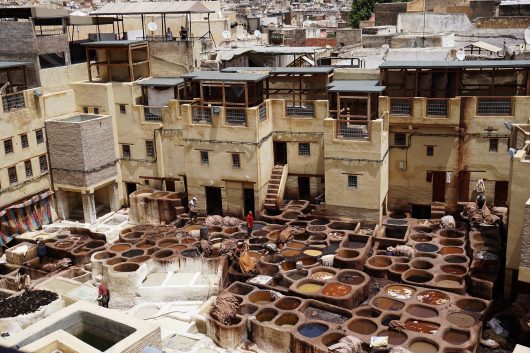
Morocco is known for being one of the most progressive states in the Middle East and North because of its advancements made for women. Despite these advancements, women’s education in Morocco still lags behind. In 1999, King Mohammed VI ascended the throne after the death of his late father. Since then, his reign has been touted as “the education decade,” and the rise of literacy for the women of Morocco could be partly credited to the King. Here are five facts about women’s education in Morocco.
- Literacy rates are low but are still increasing. For a long time, the literacy rates for women in Morocco have been low. King Mohammed’s implementation of more progressive laws has helped to increase these literacy rates. For example, one gave rights for women to be autonomous in the Family Code. Another removed all restrictions from the U.N. Convention on the Elimination of all Forms of Discrimination against Women (CEDAW). According to the World Bank, literacy rates jumped from 27% in 1999 to about 63% in 2016. Unfortunately, the number of girls pursuing high school and university are still low. Just 10% of girls attend university, but the numbers are growing due to the construction of new schools and girls’ dormitories at existing schools. This makes it easier to attend when the closest school is miles away from home and unreachable by public transportation.
- There is a big gap between the urban and rural areas of Morocco. Almost 90% of women in rural areas are illiterate. These numbers are largely due to the cultural norms in rural areas, where traditional gender roles are still prevalent. People still believe the proper place for a woman is at home. This is why the number of girls attending schools in rural areas is only 26%, while for boys it is 79%. Unfortunately for girls in rural areas, access to schools is far from easy. Most schools in rural areas are miles away from homes. The schools become inaccessible because of the poor infrastructure and dirt roads not always being reliable.
- The Language Barrier: Berber vs. Arabic. Arabic is the most commonly spoken language in the country, but Berber is the language spoken in rural areas. In many Berber-speaking areas, girls stay at home because school is taught in Arabic. The teachers provided by the state almost never know how to speak Berber. This takes away the chance for these girls to learn.
- Education for mothers on the rise. On a positive note, parents of children are also taking advantage of opportunities to learn when they can. The state started a program called Mahou Al Omiya (Erasing Illiteracy), which provides night classes in local schools. Although the program is open to both men and women, mothers of school-aged children have the highest attendance rate. This gives mothers the opportunity to complete the schooling they never had the chance to finish. This opportunity helps the mothers to form relationships with the teachers of their children and gives them the ability to assist their children with their own school work.
- Foreign aid is a necessity. Foreign aid has become essential to the advancement of women’s education in Morocco. Aid like the United States Millennium Challenge project has provided $100 million towards the construction of more schools in Morocco. The work of NGOs has also become essential. The campaign Let Girls Learn sends Peace Corps volunteers to assist local leaders to help advance girls’ education and empowerment.
While there remains a long way to go, the progress for women’s education in Morroco over the last 20 years has been remarkable. With continued local and international support, opportunities for young and old will continue to drive the nation toward a lasting prosperity.
– Maria S. Rodriguez
Photo: Flickr
